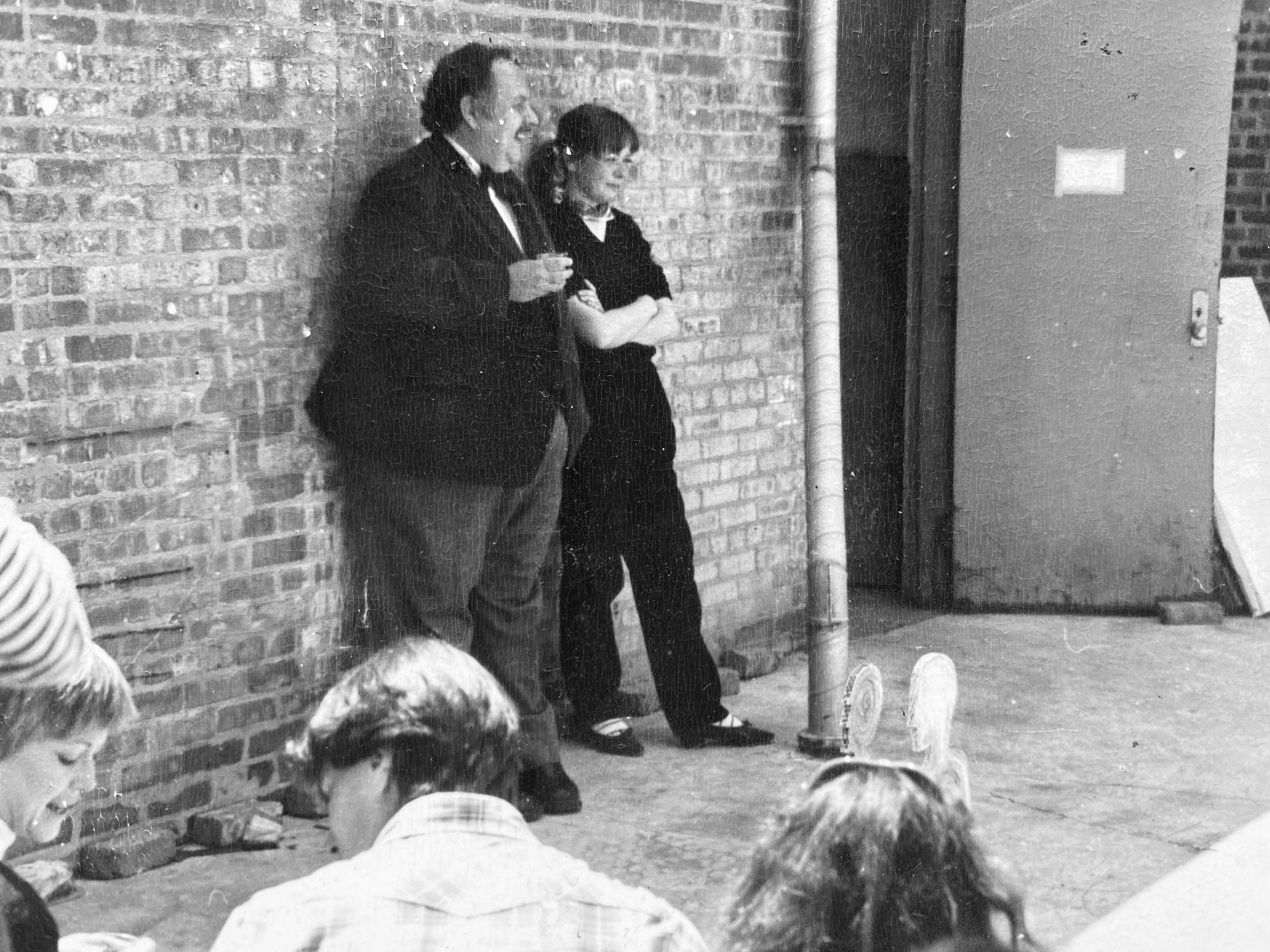Like making art and living life, several projects incorporate a more visible, “performed” time element. Not to be confused with social sculpture, performance art, or social practice!
Annette Woonachello (1976-77)
Annette Woonachello (1976-77) was an elusive alter-ego, an art celebrity before her time. She appeared at exhibition openings and in New York City during an art school visit to museums, galleries, and bars, handing out autographed 8 x 10 glossies. She confused some and was adored by others.
Our Sweet Past (1978-79)
Our Sweet Past (1978-79) began as a “discovery” of cast “artifacts” made with candy imprints, a series of documentary photographs featuring me as a serious scientist. The objects were later displayed in a glass display case, like fine jewelry on blue velvet, for a series of weeks. I later built three display cases to contextualize the “find” and provided a museum context. The “museum” was presented as part of my final thesis, and I wore an Egyptian motif dress to my graduation.
This project was inspired by a 5th-grade trip to The Royal Ontario Museum, where a docent led us through a series of displays that could only be viewed at adult eye level. The plinths became a fascination. Later, life imitated art when I worked at The Royal Ontario Museum and was invited to participate in a dig in the Dakhleh Oasis, Egypt.
Croquet Critique: I’m Croquet, You’re Croquet, (1981)
Croquet Critique: I’m Croquet, You’re Croquet, (1981), inspired by the self-help best seller of the late 60s I’m OK, You’re OK) was an invitational croquet match during my Spring 1981 School of the Art Institute of Chicago first-year MFA critique. Miniature croquet mallets, each with its distinct personality, were sent out to professors before the critique. Robert Loescher received the favored Iris Adler Memorial Croquet mallet invitation (Iris was a fellow student, still living).
The event took place in the courtyard outside the “glass shack,” the renowned Quonset hut with the sculpture department that housed Woon and three other grad student’s studios.
Four giant papier maché crocodiles stood guard at each corner of the courtyard, hosting strings of banners and sporting crossed mallets, Wickets in the form of phenology symbols and outlines of heads were spaced out throughout the courtyard, and crocodile jaw sandtraps were placed strategically. Mallets, made from oatmeal boxes, each with their own distinct personalities and balls painted brightly as eyeballs, made the croquet set for playing. Professors were given black and white costumes to wear. The only rule I provided is, “you can cheat, but you can’t get caught.” A mallet toss began the game, with the “eagles’ claw” whose hand topped the mallet stem began the game. It was unclear who won, but croquet-themed refreshments were enjoyed by students and faculty alike.



































